South Korea Solar Energy Market Size
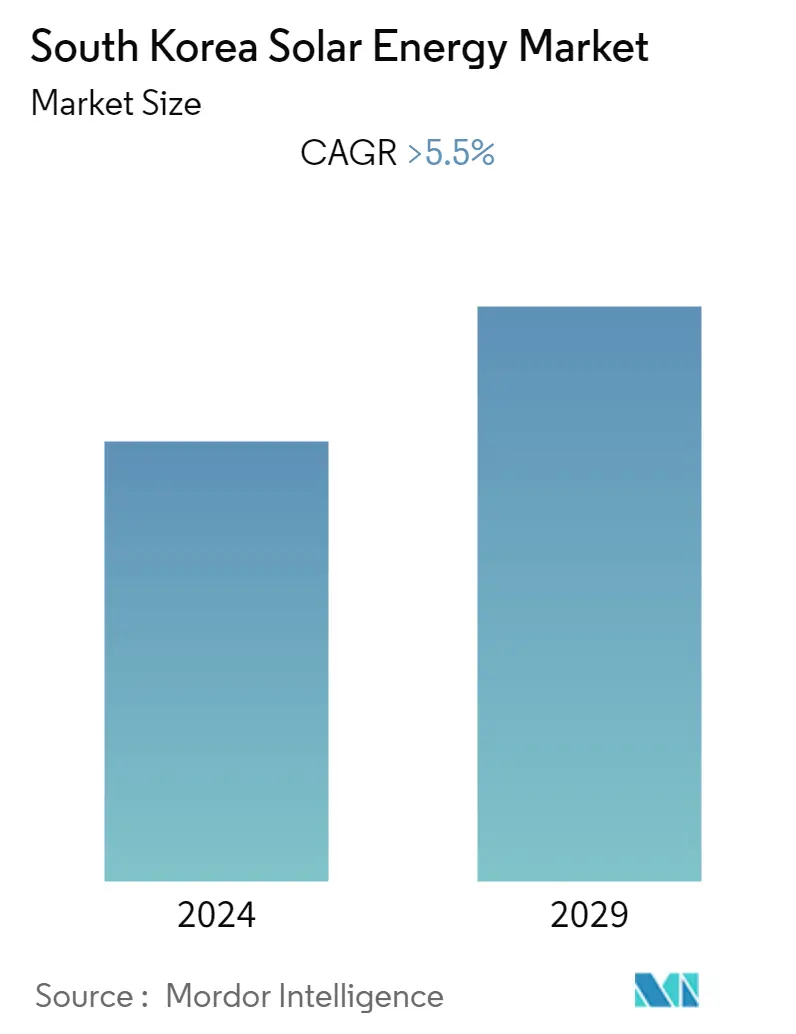
| Study Period | 2020 - 2029 |
| Base Year For Estimation | 2023 |
| Forecast Data Period | 2024 - 2029 |
| Historical Data Period | 2020 - 2022 |
| CAGR | 5.50 % |
| Market Concentration | Medium |
Major Players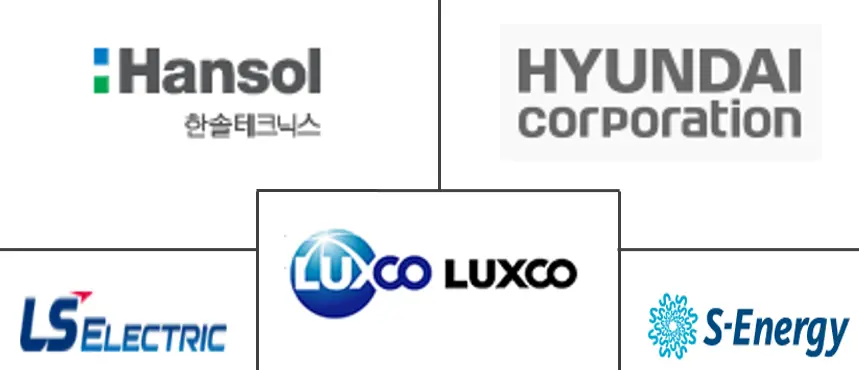
*Disclaimer: Major Players sorted in no particular order |
South Korea Solar Energy Market Analysis
The South Korean solar energy market is expected to witness a CAGR of around 5.5% during the forecast period. The COVID-19 outbreak did not have a significant impact on the South Korean solar energy market. The country witnessed an addition of around 2.6 GW of solar capacity in 2019-2020, without any delays in the projects targeted to be completed during the year. The South Korean solar energy market is expected to witness significant growth in the coming years, as the country gets a lot of sunlight and the government strongly supports the growth of renewables in the energy sector. However, the competition from other cleaner energy sources like natural gas and nuclear energy can impede the market's growth.
- The new upcoming solar photovoltaic (PV) projects planned by the private players in the country are expected to drive the market in the future.
- The country has hinted at phasing out coal-based power generation in the coming years. It plans to eject out 36.4 GW of coal power capacity by 2029, creating a tremendous opportunity for the increased penetration of renewables in the power generation sector.
- The government policies in favor of emission-free energy sources are expected to propel the market in the future.
South Korea Solar Energy Market Trends
This section covers the major market trends shaping the South Korea Solar Energy Market according to our research experts:
Upcoming Solar PV Projects Expected to Drive the Market
- South Korea's renewable arena witnessed an expansion, mainly by solar PV deployments in the country, in all the applications ranging from utility-scale to distributed solar power generation. The declining prices and investments by private players are the most prominent factors for the market's growth.
- In 2020, the solar PV capacity recorded around 19,297 GWh capacity, steady growth from around 14,163 GW in 2019. The uptrend is primarily due to the huge investments from the industry players in the country. Around USD 3.6 billion investment was made in the solar sector in 2020, comprising solar PV projects as a major part. Many new projects are lined up to increase the PV capacity of the country.
- For example, in 2020, the most highlighted PV projects financed in the said year were the large-scale 96 megawatts Anjwa Salt Field PV Plant and the 65 megawatts Hyundai E&C Seosan Reclaimed Land PV Plant. Both the projects are currently in the construction phase and are expected to come online within 2-3 years.
- Furthermore, in 2022, the Korea Energy Agency announced that it conducted two procurement rounds in 2021 to support the rooftop and large-scale PV systems installations through tenders. In the process, the agency allocated a total of 4.2 GW of PV capacity. It has already allocated around 1.2 GW and 1.41 GW of solar PV capacity through two tenders released in 2020.
- Due to such developments, solar PV projects are expected to be the most significant driver of the solar energy market.
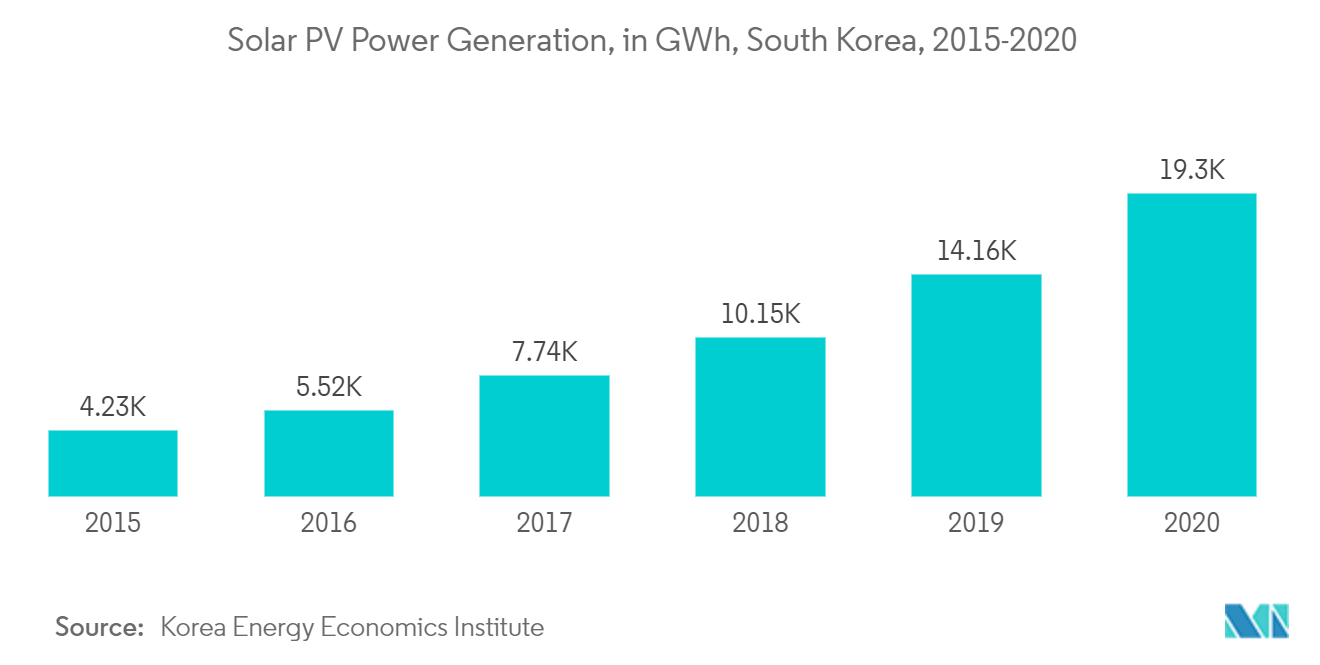
Government Initiatives Expected to Drive the Market
- The South Korean government is keen on the energy transition in the country, as Korea is still largely dependent on fossil fuels for electricity generation and other energy requirements. The highly coal-reliant energy sector urgently seeks cleaner energy sources intervention to combat the high carbon-emissions scenario of the sector.
- The share of renewables in the electricity generation mix was recorded at 6.4% in 2020. The country has set a target of 42% renewables in the power generation sector by 2034 and 20% by 2030. The government has taken many initiatives to achieve the targets, such as renewable energy supportive programs and policies.
- For example, in August 2021, South Korea passed the Carbon Neutrality Bill ('Carbon Neutrality and Green Growth Act for the Climate Change') and became the 14th nation to pledge carbon neutrality by 2050. The law will be effective from March 2022. The Act mandates the country to cut its greenhouse gas emissions by 35% by 2030 and achieve a zero-carbon emission rate by 2050.
- In September 2020, the Korean government launched the "Korea New Deal Fund" to raise private investments for green energy projects. It plans to invest about USD 144 billion in green technology and digital technology projects by 2025. The green technology projects include renewable energy, green infrastructure, and the industrial sector.
- Such developments are expected to drive the South Korean solar energy market in the coming years.
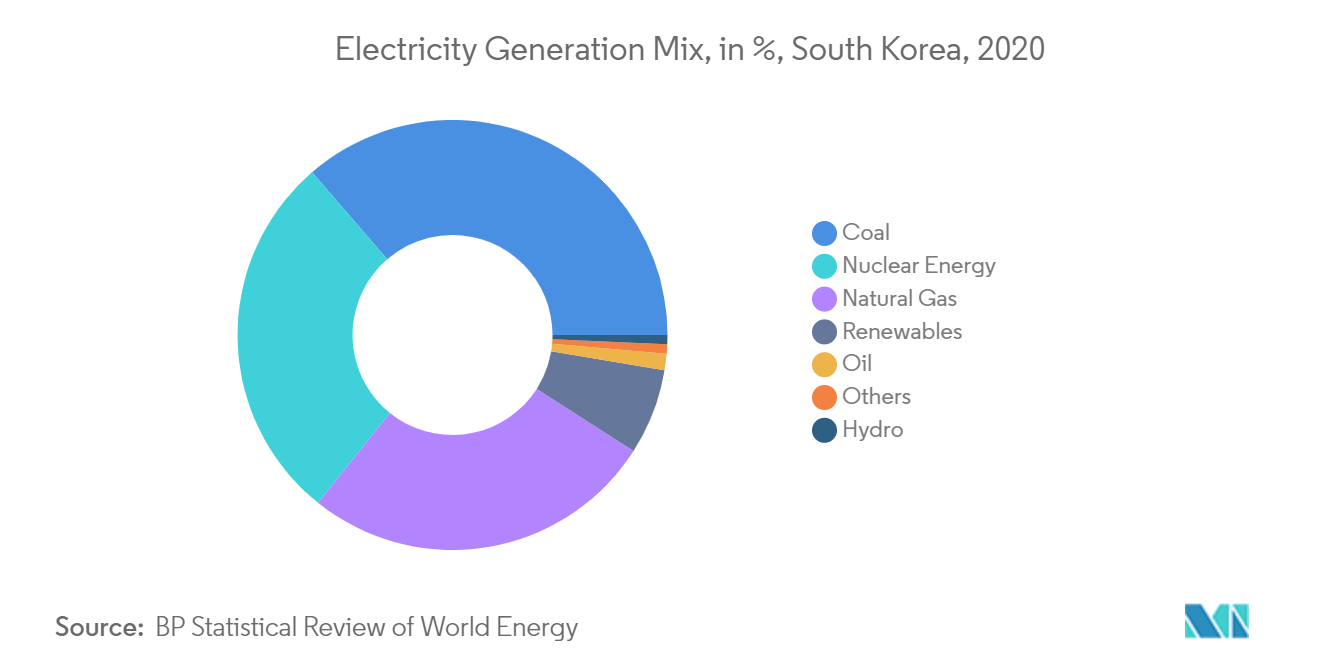
South Korea Solar Energy Industry Overview
The South Korean solar energy market is moderately fragmented. Some of the key players include Hansol Technics Co. Ltd, Hyundai Corporation, LS Electric Co. Ltd, Luxco Co. Ltd, and S Energy Co. Ltd.
South Korea Solar Energy Market Leaders
-
Hyundai Corporation
-
Luxco Co. Ltd
-
Hansol Technics Co. Ltd
-
S Energy Co. Ltd
-
LS Electric Co. Ltd
*Disclaimer: Major Players sorted in no particular order
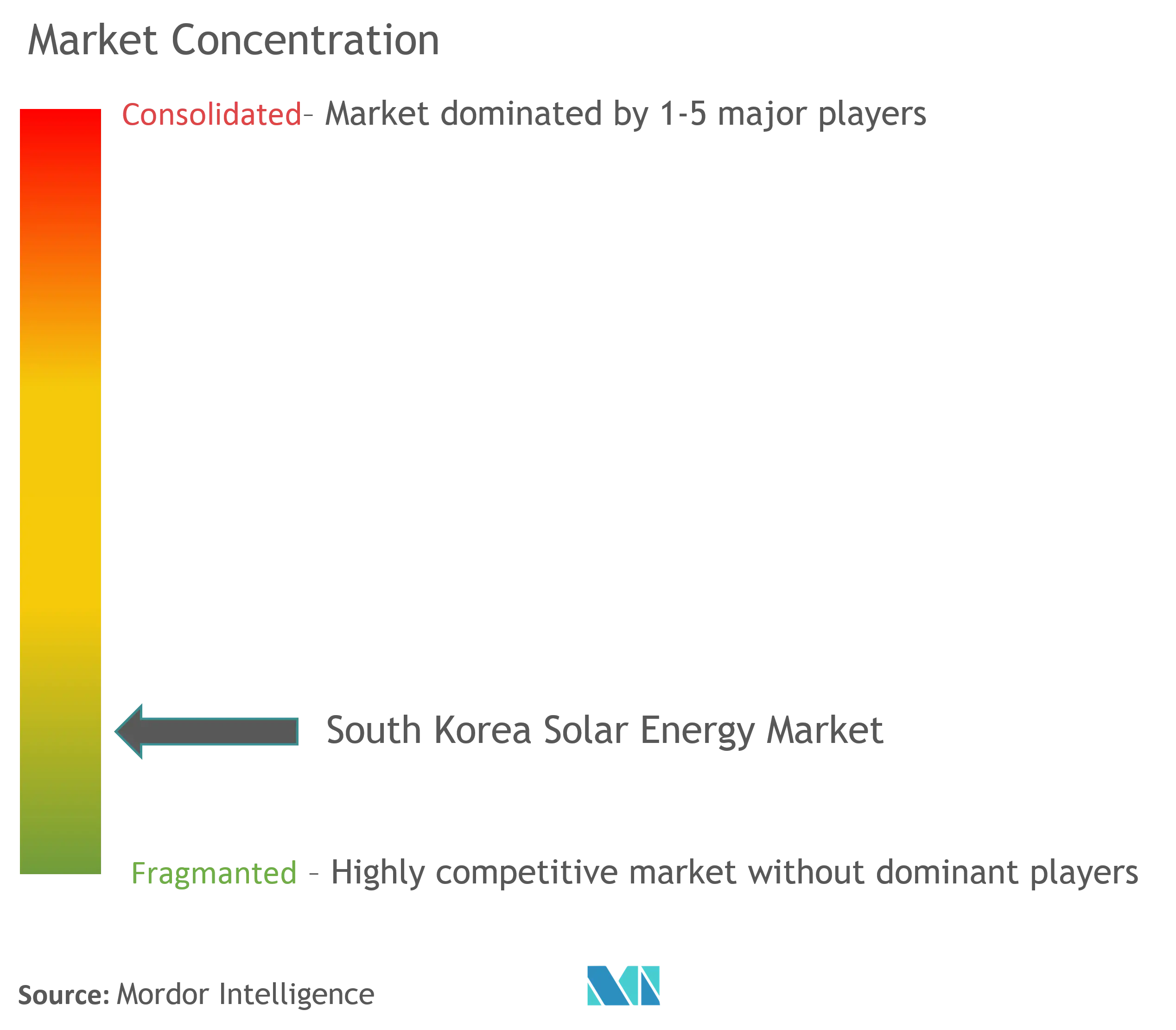
South Korea Solar Energy Market News
- In July 2021, the Korea New and Renewable Energy Center (KNERC), the branch of the Korea Energy Agency, announced that it had allocated 2.05 GW of solar capacity in the latest auction. It included 7,663 solar projects with an average tariff of around KRW 136/kWh.
- The country will have a floating solar power plant soon. Saemangeum Floating Solar Power Project is a 1,200 MW solar PV power project planned in North Jeolla, South Korea. The project is currently in the approval stage and will be developed in multiple phases. The project is likely to enter commercial operation in 2022.
South Korea Solar Energy Market Report - Table of Contents
1. INTRODUCTION
- 1.1 Scope of the Study
- 1.2 Market Definition
- 1.3 Study Assumptions
2. RESEARCH METHODOLOGY
3. EXECUTIVE SUMMARY
4. MARKET OVERVIEW
- 4.1 Introduction
- 4.2 Market Size and Demand Forecast in USD billion, till 2027
- 4.3 Recent Trends and Developments
- 4.4 Government Policies and Regulations
-
4.5 Market Dynamics
- 4.5.1 Drivers
- 4.5.2 Restraints
- 4.6 Supply Chain Analysis
- 4.7 PESTLE Analysis
5. COMPETITIVE LANDSCAPE
- 5.1 Mergers and Acquisitions, Joint Ventures, Collaborations, and Agreements
- 5.2 Strategies Adopted by Leading Players
-
5.3 Company Profiles
- 5.3.1 Hansol Technics Co. Ltd
- 5.3.2 Hyundai Corporation
- 5.3.3 LS Electric Co. Ltd
- 5.3.4 Luxco Co. Ltd
- 5.3.5 S Energy Co. Ltd
- 5.3.6 SG Networks
- 5.3.7 Super Solar Energy Co. Ltd
- 5.3.8 Topsun Co. Ltd
- 5.3.9 Advanced Energy Industries Inc.
- 5.3.10 Solarwindow Technologies Inc.
- *List Not Exhaustive
6. MARKET OPPORTUNITIES AND FUTURE TRENDS
** Subject To AvailablitySouth Korea Solar Energy Industry Segmentation
The scope of the South Korean renewable energy market report includes:
South Korea Solar Energy Market Research FAQs
What is the current South Korea Solar Energy Market size?
The South Korea Solar Energy Market is projected to register a CAGR of greater than 5.5% during the forecast period (2024-2029)
Who are the key players in South Korea Solar Energy Market?
Hyundai Corporation, Luxco Co. Ltd, Hansol Technics Co. Ltd, S Energy Co. Ltd and LS Electric Co. Ltd are the major companies operating in the South Korea Solar Energy Market.
What years does this South Korea Solar Energy Market cover?
The report covers the South Korea Solar Energy Market historical market size for years: 2020, 2021, 2022 and 2023. The report also forecasts the South Korea Solar Energy Market size for years: 2024, 2025, 2026, 2027, 2028 and 2029.
South Korea Solar Energy Industry Report
Statistics for the 2024 South Korea Solar Energy market share, size and revenue growth rate, created by Mordor Intelligence™ Industry Reports. South Korea Solar Energy analysis includes a market forecast outlook 2029 and historical overview. Get a sample of this industry analysis as a free report PDF download.



